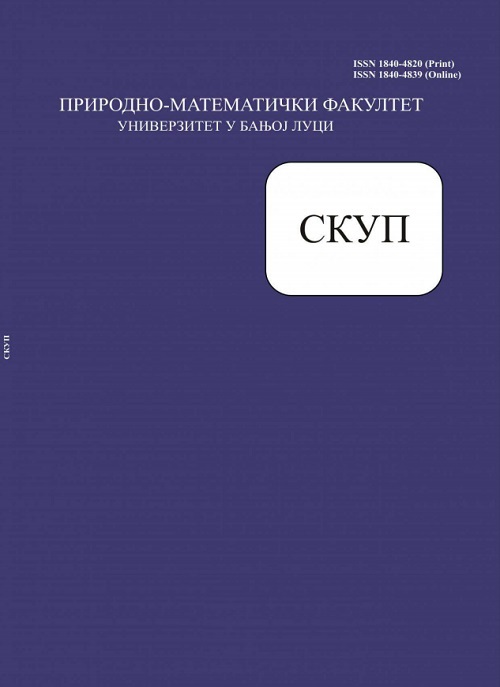DIVERSITY OF BASIDIOMYCOTA IN THE AREA OF GLAMOČANI NEAR BANJALUKA
DOI:
https://doi.org/10.7251/SKPEN191001052LAbstract
Due to its geographical location, favorable climatic conditions and large areas under the forests, Bosnia and Herzegovina is an ideal habitat for growth of various types of fungi from division Basidiomycota. However, previous research on fungal diversity was based mainly on "interesting" edible and poisonous species, while some more detailed studies of their diversity around the city of Banja Luka were not carried out. During 2015, the qualitative composition of fungi from the division Basidiomycota in the area of Glamočani near Banja Luka was examined. 57 species of macroscopic fungi were collected, which were classified into 28 families. The most frequent family was Russulaceae with 7 species, followed by Polyporaceae with 6 species and Agaricaceae and Mycenaceae with 5 species. The largest number of species in this study was found during spring (38 species), 22 species were found during autumn, and only 11 species during summer. The total number of species at this locality is certainly even greater since the collection took place between May and October in accessible areas of the field.

